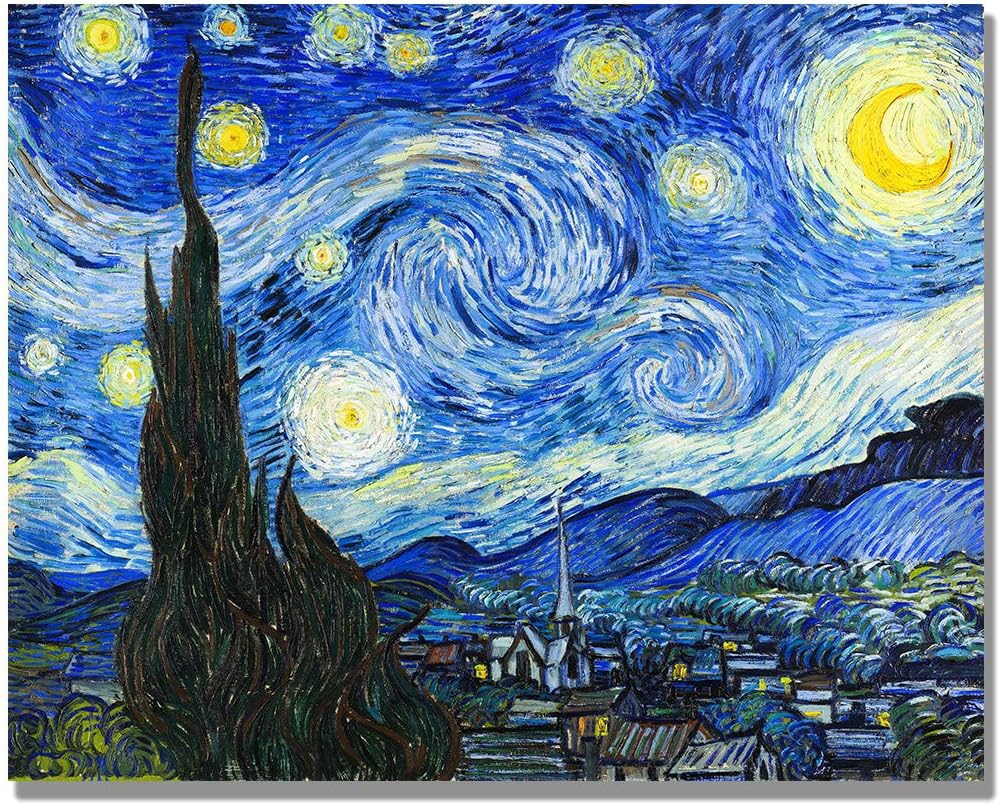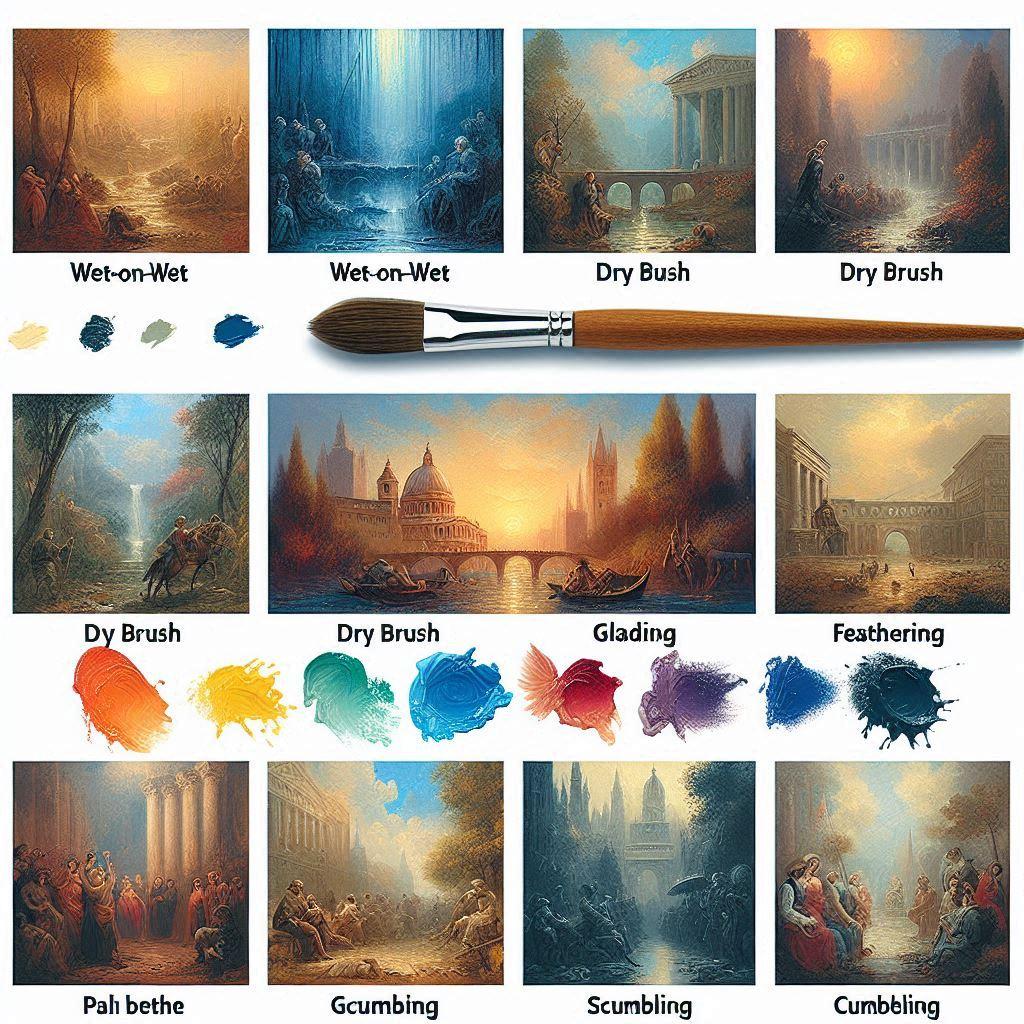The Impasto technique is where paint meets texture, quite literally. If you’ve ever seen an artwork with thick, visible brushstrokes that seem to leap off the canvas, you’ve likely come across impasto. It’s all about applying heavy impasto layers of paint, giving the work a 3D effect. Artists love this method because it makes their pieces stand out, creating a tactile experience as much as a visual one.
What is Impasto?
In simple terms, impasto is the art of applying paint in thick, heavy strokes, so thick that the brush or knife marks remain visible. This is not a technique where you smooth things out—it’s about embracing texture. The paint is laid on so heavily that it creates real depth, forming wrinkles, peaks, and valleys across the surface. These wrinkles in the paint catch light, making the artwork change depending on the viewer’s angle.
Impasto painting isn’t just about thickness. It’s about control and intentionality. Artists use big impasto patches to draw attention to specific parts of the canvas, making those areas pop in ways flat painting simply can’t achieve.
History of the Impasto Technique
The Impasto technique has a long and textured (pun intended) history. Although impasto painters have been around for centuries, the method really hit its stride during the era of Impressionism. Artists like Vincent van Gogh used impasto to express movement and light in ways that thin, flat brushstrokes couldn’t convey.
Before that, impasto artists like Rembrandt and Titian applied thick layers of paint to create highlights, especially in portraits. These pioneers weren’t just concerned with what they were painting but how the paint itself interacted with light. Later on, artists in the Impressionism and Post-Impressionism movements, like Paul Cézanne (yep, the legendary Impasto artist Paul), pushed impasto further, treating it as an integral part of their compositions.
Why Use Impasto?
Why do so many artists use the Impasto technique? Here’s why impasto painters love this method:
- Texture: Obviously, impasto paint is all about that thick, tactile texture. Your eyes aren’t just seeing the color—they’re seeing and almost feeling the paint.
- Lighting Effects: The raised areas and wrinkles created by heavy paint catch light in interesting ways. These shadows and highlights add another layer of depth to your work.
- Emotion: Thick, bold strokes give a sense of energy and emotion. Impasto painting helps express feelings in a more direct, raw way.
- Fixing Mistakes: Impasto is also forgiving. Got an area that doesn’t look right? Just cover it with a big impasto patch of fresh paint.
How to Paint with Impasto
Mastering the Impasto technique takes practice, but it’s surprisingly accessible for beginners. Here’s a quick guide to get started.

1. Use the Right Paint
Impasto paint needs to be thick. Oil and acrylic paints are your best bet because they hold their shape. If you try using thin, watery paints like watercolors, they’ll just spread out instead of giving you the volume and texture you’re after.
2. Grab a Palette Knife
You can use a brush for Impasto, but most artists reach for a knife. A palette knife lets you lay down paint thickly and scrape it across the canvas in broad strokes. It’s ideal for building up layers and creating sharp lines and textures.
3. Layer On the Paint
The secret to a good impasto painting is building layers. Don’t be afraid to apply paint thickly. Start with a strong base layer and then build on it with heavier strokes. You can use the knife to add complicated impasto details to the surface as you go, giving your painting a real sense of dimension.
4. Experiment with Techniques
There’s no one way to master impasto. Some artists like to use heavy impasto throughout the entire painting, while others use it selectively, drawing the eye to key areas by creating texture only in certain places. You could focus on complicated impasto details in the foreground while keeping the background smooth for contrast.
Famous Impasto Artists
Some of the most renowned names in art history have made the Impasto technique their own. Here are a few legends:
1. Vincent van Gogh
When you think of Impasto paintings, Van Gogh’s name comes to mind first. His swirling, emotive brushstrokes in works like Starry Night are prime examples of heavy impasto. He used thick paint to capture movement and energy, making his work more vibrant and alive.
2. Rembrandt
Long before Van Gogh, Rembrandt was using impasto to play with light. His impasto technique involved applying paint heavily in key areas, especially around the highlights of his subjects, like the faces in his portraits. This technique brought his work to life, giving a three-dimensional quality to his figures.
3. Paul Cézanne
Impasto artist Paul Cézanne took a slightly different approach. His use of impasto wasn’t about swirling lines and thick brushstrokes but more about layering paint in a controlled, methodical way to build up textures and create unique surfaces. His works laid the groundwork for modern art movements that would continue to explore impasto.
4. Jackson Pollock
While Pollock is famous for his drip paintings, he also used the Impasto technique in some of his more textured works. By layering paint upon paint, Pollock gave his art a physical presence that stood out in the abstract expressionist movement.
Famous Impasto Paintings
| Painting Name | Artist | Gallery Location |
|---|---|---|
| The Starry Night | Vincent van Gogh | Museum of Modern Art, New York, USA |
| Sunflowers | Vincent van Gogh | Van Gogh Museum, Amsterdam, Netherlands |
| Wheat Field with Cypresses | Vincent Van Gogh | Metropolitan Museum of Art, New York City, USA |
| La Mousmé | Vincent van Gogh | National Gallery of Art, Washington D.C., USA |
| Young Peasant Woman | Camille Pissarro | The Walters Art Museum, Baltimore, USA |
| Portrait of a Man | Diego Velázquez | Metropolitan Museum of Art, New York, USA |
| Head of a Peasant Woman | Vincent van Gogh | National Galleries of Scotland, Edinburgh, Scotland |
| The Scream | Edvard Munch | National Museum and Munch Museum, Oslo, Norway |
Common Questions About Impasto
Curious about impasto questions? Here are some common ones:
Is Impasto Difficult for Beginners?
No, the beauty of impasto painting is its flexibility. You don’t have to be precise. You can experiment with big impasto patches and knife techniques until you find a style that works for you.
What’s the Best Paint for Impasto?
Heavy-bodied oil or acrylic paint works best because it holds its shape. You can even use special additives with acrylics to make them thicker for time impasto work.
Can I Use Impasto on Any Surface?
Canvas is the go-to surface, but you can also use it on other sturdy surfaces like wood. Just make sure the surface can support the weight of the impasto paint without warping.
Final Thoughts on Impasto
The Impasto technique is more than just applying paint thickly—it’s about playing with texture, light, and emotion in ways traditional techniques can’t touch. Whether you’re following in the footsteps of Van Gogh with swirling skies or experimenting with your own style, impasto painting can add an extra dimension to your work.
Ready to give it a shot? Grab a knife, load up on some thick oil or acrylic paints, and start creating your own impasto paintings. There’s nothing quite like seeing your art take on a life of its own with every layer of paint
(ziz52)



